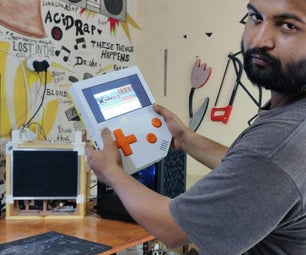Introduction: SmartTerra
Here is a instructable how to make your own Smart Terrarium for your bearded dragon.
Supplies
- Planks (MDF 18mm) (in mm)
- 1x 600 * 300
- 2x 400 * 300
- 1x 400 * 564
- 1x 100 * 564
- 2x 264 * 564
- 1x 50 * 564
- 2x 77 * 51
- 2x 77 * 30
- 1x 77 * 10
- Plank (MDF 14mm) (in mm)
- 1x 70 * 554x
- Metal profile(U-shape) (width-height-thick) 50cm-1cm-1mm
- 2x Lampholder E27
- 2x Metal plate (L-shape)
- +- 30 Universal Screws (3mm * 16mm)
- +- 100 Universal Screws (4mm * 30mm)
- 5m Electrical cable VTMB 2 * 1.5mm
- 10m Electrical cable VTMB 4*0.6mm
- A handle you like for the hatch on top
- A handle you like for the door
- 2x or 1x hinge for the hatch on top
- 1x powerplug and socket
- 2x plexiplate 30cm * 24.1cm
- Grass mat
- UV sensor for Raspberry pi
- UV lamp terrarium
- Ceramic heat lamp terrarium
- 3x DS18B20 temperature sensor
- LCD 0.96" Inch 4x16 with IICMCP3008
- Magnetic reed switch
- Relay module (5V 2channel 10A) for raspberry PI
- Steppermotor with driver board
- 3Dprinted feedhatch part
- Connector (for powersupply)
- Heat shrink400 pin breadbord
- Jumpers male - female, male-male and female to female
- 5x Small nails
- Secondglue
- Resistance
- 1x 4.7kOhm
- 1x 330Ohm
- +- 25x Electrical round clamps Ø6
- Tools
- Handscewmachine
- Universal Drill set 0.5mm - 10mm
- Soldering iron
- Measuring tools
- Saw
- Jigsaw
- Hammerflat screwdriver
- counterbore 50mm
Step 1: Configure Your Raspberry Pi
In terminal
- sudo apt-get update
- sudo apt-get upgrade
- sudo apt-get install mysql-sever
- sudo apt-get install mysql-client
- mysql -uroot -p
- copy past the content of the dump
- sudo nano /etc/rc.local
- paste this underneat everything
nohup python3 /var/www/html/back/start.py
- paste this underneat everything
Step 2: Prepare the Sides of the Terrarium (2* 40cm X 30xm)
Sign your planks and predrill them(see image for the dimensions).
Step 3: Prepare the Back of the Terrarium (40cm X 56.4xm)
Sign your planks and predrill them(see image for the dimensions).
Step 4: Put Together the Sides to the Back (40cm X 56.4xm)
Step 5: Put Together the Inside Plank of the Terrarium (54.4 X 26.4)
Step 6: Put Together the Bottom Plank
You may become something like this
Step 7: Prepare the Front Plank (56.4cm X 5cm)
Step 8: Prepare the Other Front Plank (10cm X 56.4cm)
Cut a hole with the jigsaw for your LCD (measure it on the middle)
Attach your LCD with the plank with screws (3x16)
Step 9: Place the U-shapes on Your Front Planks With Screws
Put your Plexi in it and glue the magnetic contact on one plexi.
Attach the other side of the magnetic contact on your terrarium. (see on picture)
Then screw the plank with the LCD on his place.
(We connect the lamps in one of the next steps)
Step 10: Prepare the Feeder Hole (2* 7.7cm X 5.1cm)(2* 7.7cm X 3cm)
Put the planks together with nails
Step 11: Drill a Hole on Top With a Drill Ø10
30cm from the side
6.2cm from the back
Prepare the holes for the screws for the hatch.
Step 12: Drill a Hole on the Spacer With a Drill Ø10
4.4cm from back
28.2cm from the side (inside) (make sure that the hole is drilled equal with the hole on the top)
Attach the hatch on the top.
Step 13: Drill a Hole for the Axis and Another for the Cable of the Motor
hole for the axis Ø6
hole for the cable Ø10
Step 14: Cut a Hole With the Jigsaw for Hatch for Electricity (additionally)
Step 15: Give the Hatch a Lid
Take the plank that you cut out of the hatch hole and make sure the corners are nice.
Attach your hinge and knob to the plank.
Attach the plank on top.
Step 16: Set Your 3Dprinted Item on the Stepper
Make sure its good connected. (see video for working)
Attachments
Step 17: Drill Holes for Your Sensors in the Corners
Connect the electrical wiring and bulbs.
Something like the picture.
Step 18: Drill a Hole in Your Stone for the Temperature Sensor
Step 19: Wiring
Step 20: Database
Attachments
Step 21: 3D Print
Attachments
Step 22: Github
Step 23: Bill of Materials
a total of €221
Attachments

Participated in the
Pets Challenge









